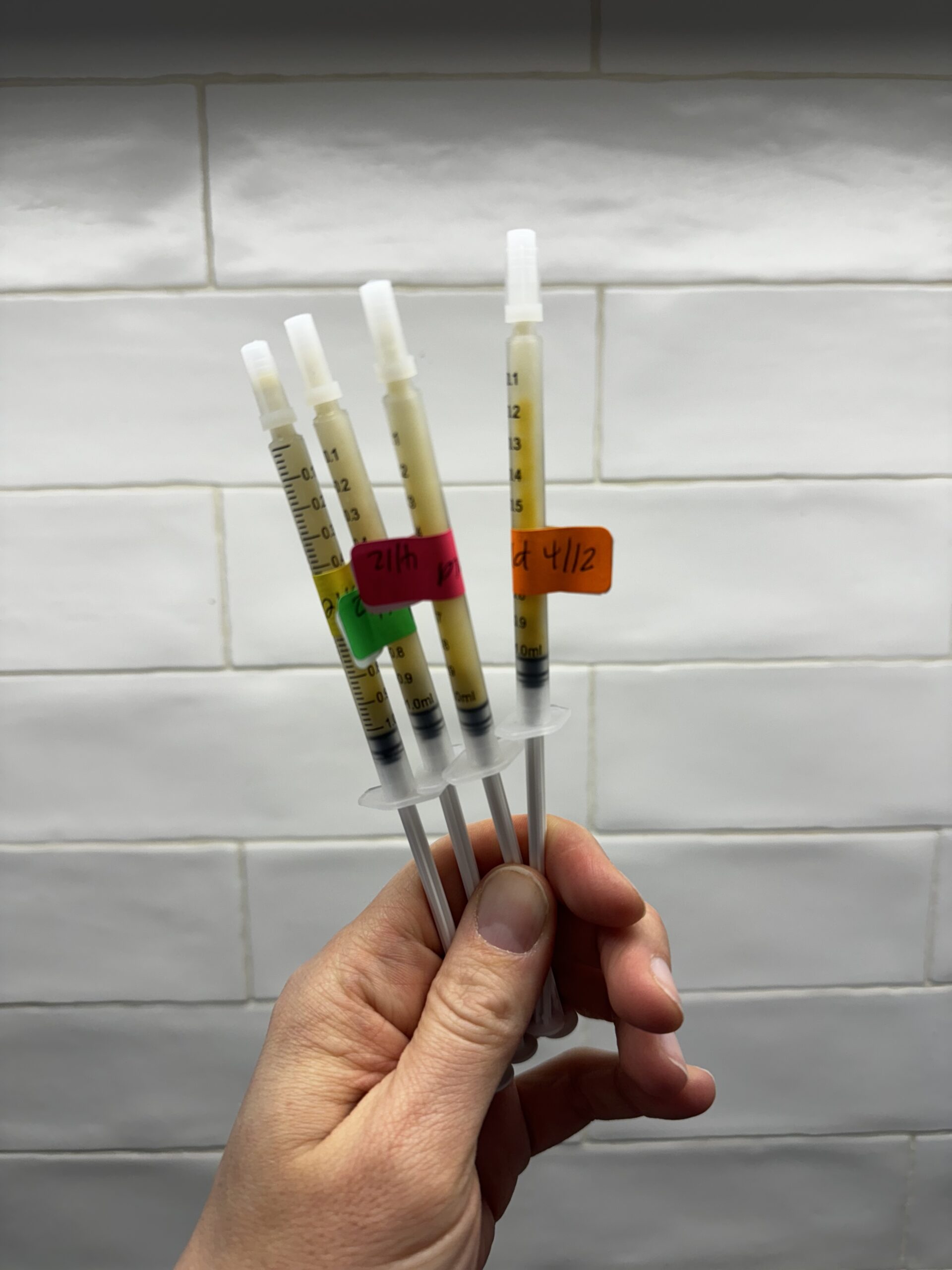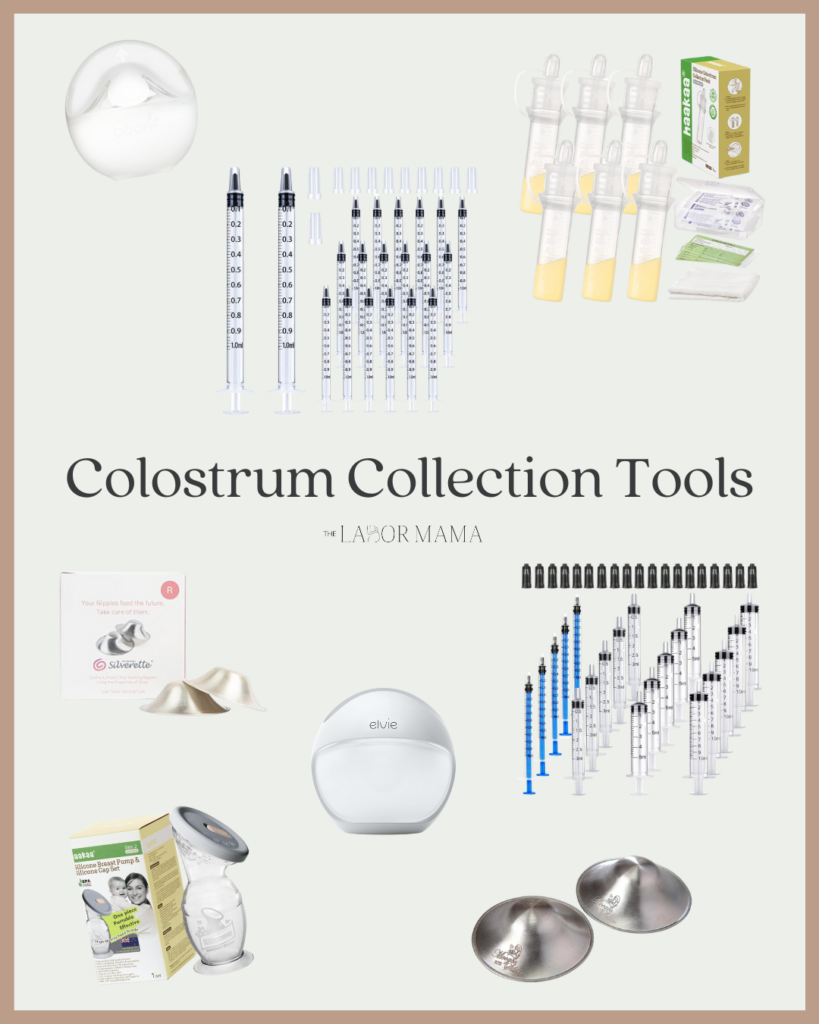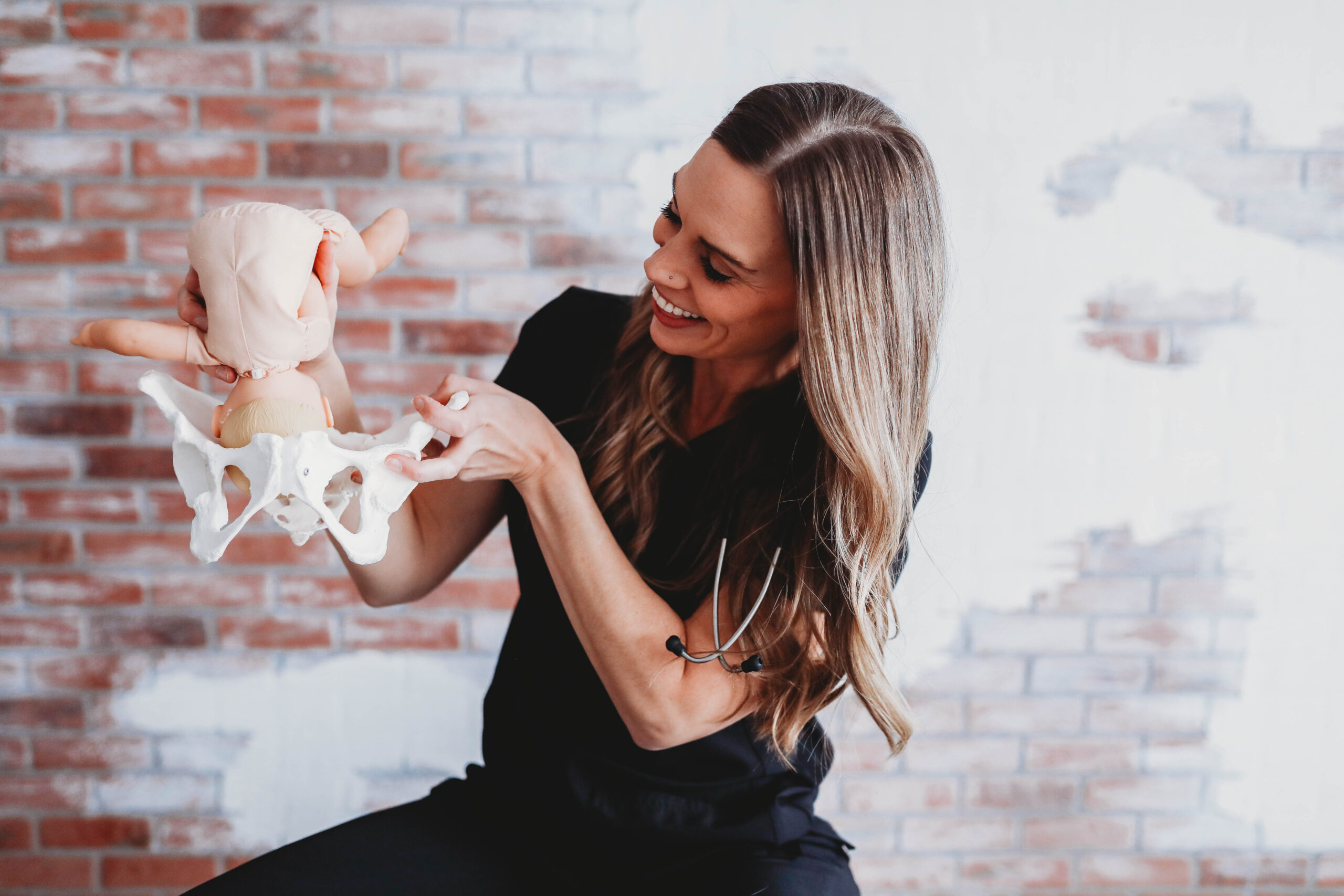Have you heard of collecting colostrum before birth? There’s a good chance you may not have – totally okay! And if you have, you may also be wondering “what the heck is this all about and how the heck do I do that?” I’m so pumped you’re here, because I’m going to tell you! Antenatal colostrum collection, or colostrum harvesting, feels like a bit of a “newer” birth prep thing, but it has some awesome benefits for you and baby and I personally don’t think it’s hard to try at all! Let’s get into it.
? First things first: There is a “partner” blog to this post that you should read first! Go read: What is Colostrum + Should You Collect it Before Birth? so you know why this “liquid gold” is worth collecting!
Ok, let’s get into how to collect colostrum for baby!
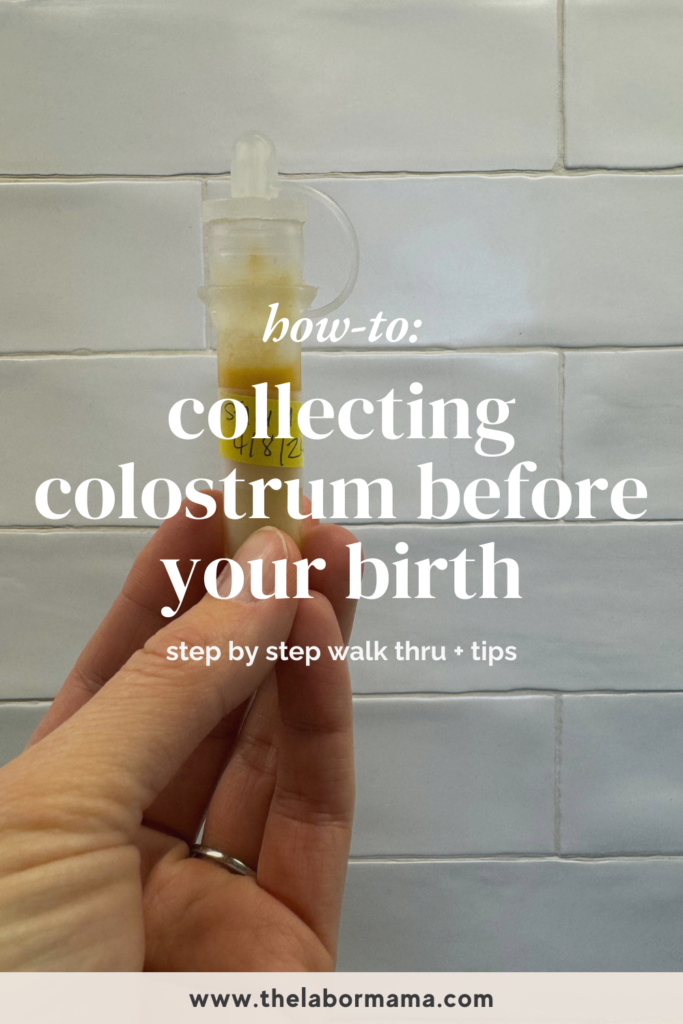
Who is The Labor Mama and Why Am I Here?
Hey friend! I’m Lo – also known around here and social media as The Labor Mama. I’ve spent my nursing career in labor, delivery, and postpartum, have birthed 4 of my own babies, have labored thousands of mamas at the bedside, have taught thousands of students online, and have even delivered a few speedy little babies with my bare hands (oops).
Here at TLM, I offer online classes about birth, postpartum, newborn care, and breastfeeding to empower you the way everyone should be. The education + support I offer gives you experience, evidence, and empathy; you’re getting all of my years of “clinical” RN knowledge, honestly combined with my real experiences as a mama and a nurse. These are not your average hospital classes (those won’t do it, I promise), and honestly, birth, postpartum, and breastfeeding don’t follow a textbook or protocol anyway. You need to know so much more than that!
If you want to connect with me further, head to Instagram. There are hundreds of thousands of us over there learning together daily.
A note: This post may include affiliate links. This means if you make a purchase after clicking a link, I will earn a small commission (thank you)! Rest assured, this comes at no additional cost to you. You can read TLM’s full disclosure here.
When to start harvesting colostrum?
We have to start right here, okay? If you would like to do collect colostrum, it’s super important that you discuss it with your care provider first. There are a few situations where colostrum collection would likely not be approved. This may include those who:
- Are carrying multiples
- Have a history of preterm labor
- Have an incompetent cervix or a cerclage
- Have a history of early rupture of membranes
When you collect colostrum, it involves nipple stimulation. And we know that nipple stimulation can increase oxytocin levels, which can then cause contractions! In scenarios like those I just mentioned, you’re already at risk for going into labor too soon, so that is why it’s possible your provider may recommend you do not collect colostrum during pregnancy.
If you’re good to go on collecting, the recommendation is probably that you can begin to do so around 36-37 week or so of pregnancy!
What do you need to collect colostrum?
Good news – you don’t need much to give this a try! It’s a pretty simple skill, you mostly just need your hands and something to collect your colostrum into! This remains true after birth as well when people use the words hand expression. The skill is the same, but if baby is nearby or skin to skin, that is a big plus!
In regards to “what” to collect colostrum into, there are a couple of different options for you. This includes syringes with caps, spoons (I prefer these only when feeding directly to baby after expression), medicine cups or silver cups, or products like the Haakaa colostrum collectors.
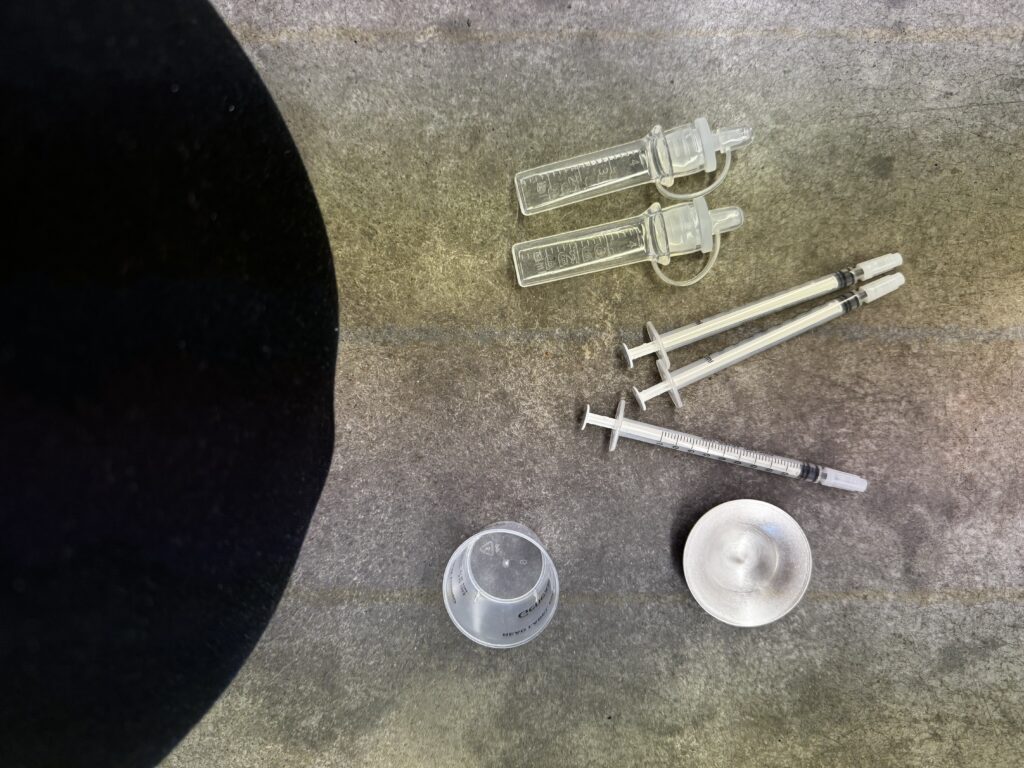
If you are leaking a ton of colostrum, you can also consider a manual hand pump or a milk catcher or collector (like the Haakaa or the Elvie Curve). However, colostrum is pretty sticky and thick, so it may be tough to actually get it out of a pump or catcher and into a syringe for feeding baby. Whatever you use, you will want to be able to store and freeze the colostrum safely until you’re ready to use it.
My personal thoughts on what to use
Personally, I like the 1 ml syringes for starting out or I like expressing into a small collection cup or silverette and then drawing that up into a 1 ml syringe. If you feel “clunky” trying to use the syringe and draw up the little volumes, I get it! Definitely try the second option I just mentioned, expressing the drops into the nice big open top med cup and then you can stop, but the cup down, and use both hands to draw the colostrum up from the cup into the syringe.
Typically, the total volume of colostrum collected is small; it could be just a few drops and it can definitely be less than 1 ml. It may increase as you get more adept at the skill or as you start to express more, but it also may not! These are both normal, but I think the 1 ml syringes are so much more encouraging for when you are getting those smaller amounts. They small syringes are also really easy to sneak into the side of babies’ mouths and give to them after birth!
If you do find your expressing more than 1 ml, collectors like the Haakaa ones are great because they hold more volume (about 4 ml). I also love that the syringes are squeezable. You can suction up the drops one by one or you can also pull the cap off and express drops right into the big chamber. If you do another session later that day (or have a 1 ml syringe that is full), you could also easily add that to the collection chamber and then freeze it all end of day. I like how simple these are to use and the options they have so if I know I’m getting more volume, I choose something like this.
A note: If you combine colostrum from sessions, make sure it’s labeled as the “oldest” collection. The rules for colostrum labeling, storage, combination, collection and use are the same as for breastmilk!
How much to colostrum should you collect?
There is NO set answer for how much to collect. Also, no once can say how much you may (or may not) be able to express out! Honestly, I would most hope that you hear that it’s okay to get 0.5 ml, to not see any, or to get 4 ml. Each of these scenarios is normal. Personally, I’ve also had days where I was able to get more than the prior day, but I don’t really know why! Your output can change and that’s okay! None of this prenatal expression is indication of a better milk supply, that there is “no milk,” etc.
In general, it is nice to remember that colostrum volumes are SMALL. That is how the system works. That is why a 1 ml syringe is so standardly used! It’s not a lot, but it’s perfectly normal for colostrum and for how much baby needs after birth too! This is why I hesitate to tell someone to grab a 5 ml syringe and use that. You’ll likely feel like you’re doing nothing or that it’s barely full, but that’s not true at all.
For more on the newborn stomach: Understanding the Newborn Stomach & How It Changes
How often should you try to harvest colostrum?
How often to collect is kind of up to you. I’ve seen recommendations for once a day (that’s what I’ve always done). I’ve also seen recommendations to start at the 1x a day and then move up to 2-3 times a day if you’d like to. To be honest, I suggest asking your care provider about the “frequency” when you ask them when or if you can begin collecting. Get a good gauge with them of what feels right and then go from there!
How to collect colostrum?
Ok, let’s get into the how-to! Here are the steps to actual expression and collection:
01. Wash your hands, make sure you have your sterile collecting tool, and get comfy cozy. You do want to be relaxed and I want you to remember to let go of all expectations too. A session usually takes about 20 minutes or so.
02. Prep the breast: Try some gentle, light massage around the breast, right to the nipples. You can also give your nipples a gentle stretch as well to help get some hormones flowing.
03. Make a letter C shape with your hand and place the thumb and index finger on the breast or areola, behind or around the nipple. Gently push back toward the chest wall and compress, and release. Do this rhythmically, about 1 compression per second – we’re simulating a baby sucking! If there is any squeeze, it should be GENTLE and light. This more about compressing down and into the tissue!
Once you see a drop or 2, grab your collection tool, bring it to the nipple, and catch (or suck into syringe). As you express, remember that you do not want to pinch and pull forward, this is just rhythmic compression, repeating until the flow in that area (if any) slows or stops. It should not be painful!
04. After trying a few times in that location, maintain the C shape, move to another area on the breast, and repeat the process again. Keep rotating until you’ve covered both breasts – not focused on output but instead just considering fully covering each breast! Usually, this takes a 10 minutes or so per breast, maybe 20 minutes or so for both!
05. When you are finished, you’ll want to make sure your collection is capped/sealed and labeled. Since you will likely be taking some (or all) of this to the hospital and it may be placed in a unit freezer or fridge, be sure to note date and time and your last name.
If you want help with this breastfeeding relationship – I can give you that! Postpartum RN, CLC, mama of FOUR breastfed babies – The Breastfeeding Blueprint course gives YOU all of my hard fought for education and saves you time and tears and giving you one place to go for all your breastfeeding questions, concerns, and hopes. Doors are open right now!
Storing your colostrum
In general, the CDC guidelines are what you should be following here! This means colostrum can be in the fridge before freezing. I’ve also mentioned this once, but if you have more space left in the syringe/collector you use during collection, you can refrigerate it and then add to it with your 2nd or 3rd session that day. Personally, I would then choose to freeze all of end of day and begin with a new collection the next day (as opposed to following the “you have 4 days in the fridge” rule for breastmilk).
When you label your colostrum, make sure it is labeled with the timing of the earliest collection! That means the “oldest” colostrum is how that combined collection should be dated! Once labeled and ready for freezing, consider placing them all in a ziplock, a Tupperware or some sort of storage box in the freezer.
Bringing your colostrum to the hospital
I actually think it’s a great idea to give the birthing unit a call and ask them about colostrum storage once you are there. I’ve had patients bring in syringes and keep them in their own coolers in their rooms and I’ve had patients hand the colostrum over and we store it in the unit fridge or freezer until it’s needed. You don’t always know how long it may need to be stored before its use, so calling ahead is a great way to clarify what you want to do.
Depending on the amount of colostrum you collect, you may want to consider not bringing all of it with you to your birth. I’m guessing that your primary focus after birth will be on latching the baby and having them eating at the breast. Defrosted colostrum does have to be used within 24 hours, but baby’s tummy is also small and there is no guarantee that you will need all (or even any) of the colostrum you bring if baby and you are doing really well together at the breast! Of course, no one is going to want to have to waste it (and that’s not likely at all), but it can be really nice to just bring a bit and then have someone bring you more from your home if you do need more.
The how-to takeaway on colostrum collection
I so hope this all helped you understand how to collect colostrum, store it, and bring it to your hospital too! Don’t forget to read my other blog on the what and why of colostrum so you really feel good about what you’re trying to do and why it matters! I really do think this is such a cool practice, has great benefits for you and baby, and truly can be such a great way to grow in confidence before baby is even born!
Did you collect colostrum? How did it go? What was your favorite tool to collect? xx – Lo
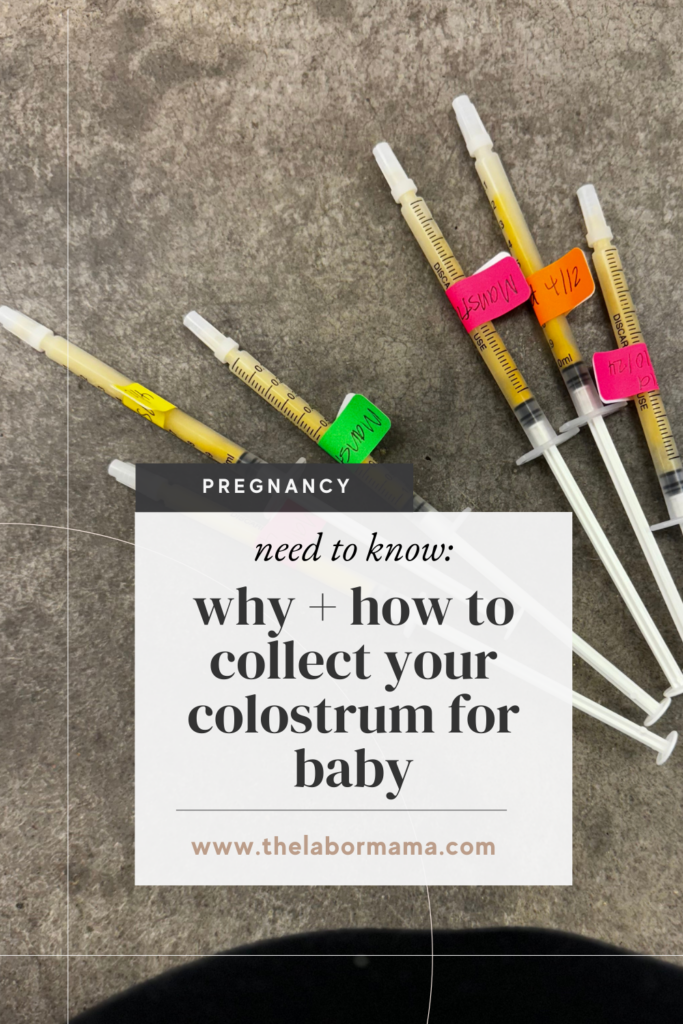
More resources (and freebies!) for you to take a peek at are below, and don’t forget about my online course options here:
